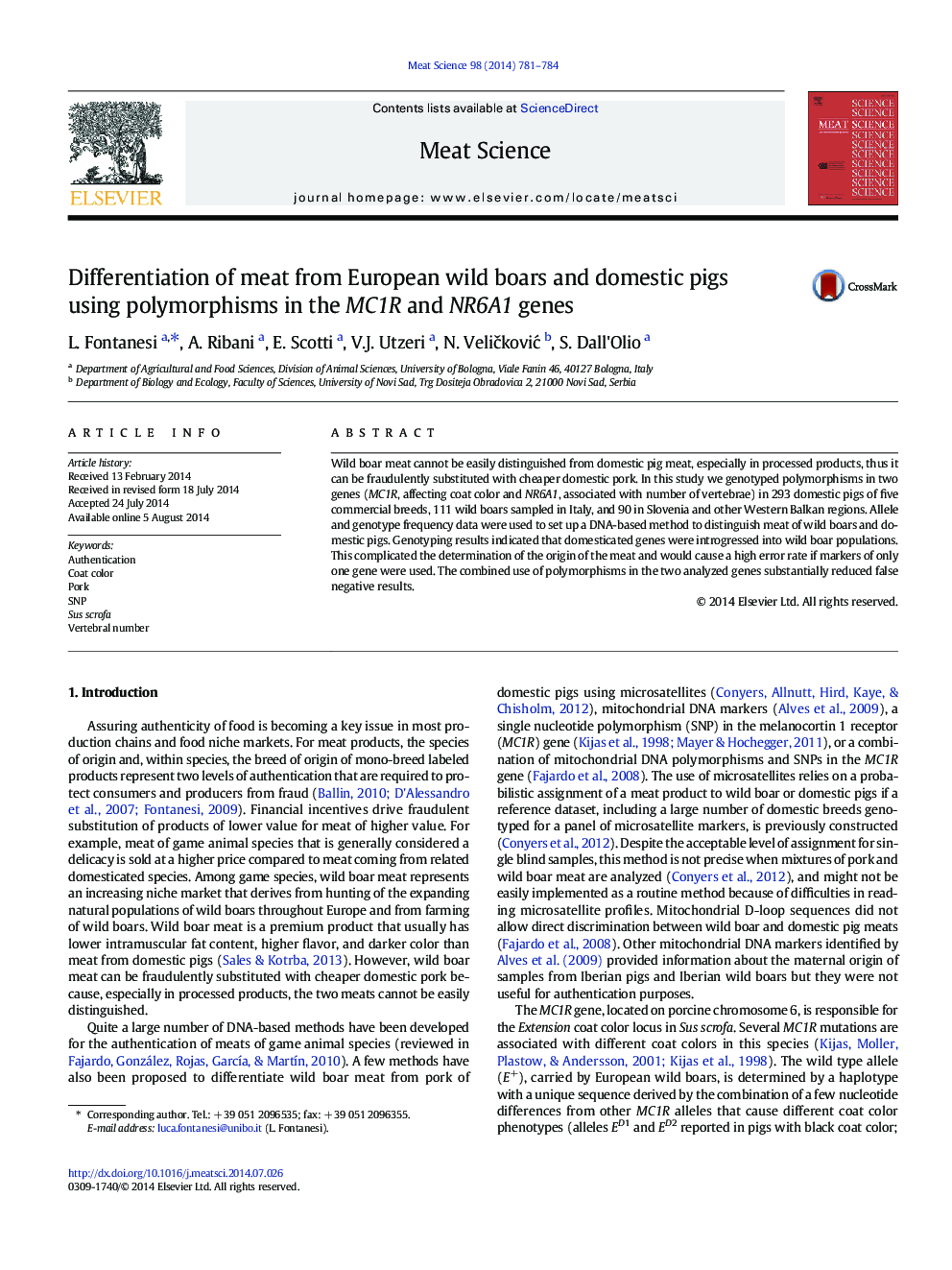| Article ID | Journal | Published Year | Pages | File Type |
|---|---|---|---|---|
| 2450012 | Meat Science | 2014 | 4 Pages |
•Wild boar meat represents an increasing niche market.•DNA-based systems are needed to distinguish wild boar meat from domestic pig meat.•Introgression of domesticated genes into wild boar genomes complicates the question.•We set up an efficient method based on the analysis of MC1R and NR6A1 polymorphisms.
Wild boar meat cannot be easily distinguished from domestic pig meat, especially in processed products, thus it can be fraudulently substituted with cheaper domestic pork. In this study we genotyped polymorphisms in two genes (MC1R, affecting coat color and NR6A1, associated with number of vertebrae) in 293 domestic pigs of five commercial breeds, 111 wild boars sampled in Italy, and 90 in Slovenia and other Western Balkan regions. Allele and genotype frequency data were used to set up a DNA-based method to distinguish meat of wild boars and domestic pigs. Genotyping results indicated that domesticated genes were introgressed into wild boar populations. This complicated the determination of the origin of the meat and would cause a high error rate if markers of only one gene were used. The combined use of polymorphisms in the two analyzed genes substantially reduced false negative results.
